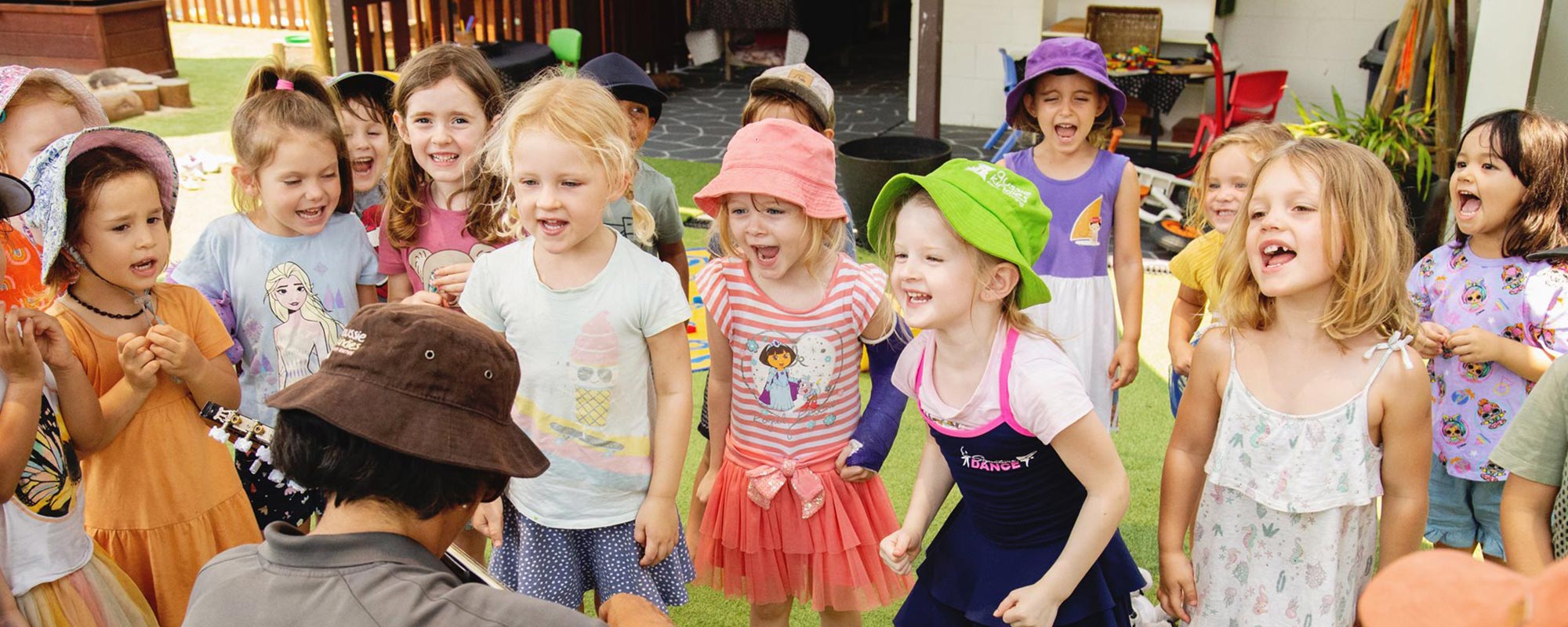
Celebrating International Dance Day – 29 April
If your child has ever busted out a wobbly wiggle mid-walk or started spinning in circles just because they felt like it — you’re not alone. At Aussie Kindies, we see it every day — and we love it!
That joyful, spontaneous movement is more than just cute. It’s how little ones explore their world, express big feelings, and grow in confidence.
To celebrate International Dance Day on 29 April, we’re cheering on all the mini movers and groovers out there — and sharing why dance is one of the most powerful tools for learning and self-expression.
Dancing Builds More Than Just Energy to Burn
Sure, dancing helps children get active and burn off energy (especially before nap time!) — but it does so much more than that.
When children dance, they are:
- Showing how they feel — happy, silly, even frustrated
- Learning what their bodies can do
- Building confidence by taking creative risks
- Developing self-control by stopping, starting, and listening to cues
- Learning how to take turns, follow, and lead with others
It’s movement, imagination, music, and learning — all rolled into one fun activity.
Why Confidence Matters for Kinder Kids
Confidence helps kids have a go — whether it’s trying something new, joining in with friends, or bouncing back when things don’t go to plan.
At Aussie Kindies, we use music and movement to build that confidence every day through:
- Group dance games and music sessions
- Silly movement play where children become animals, trucks, or weather!
- Yoga and calming stretches to help little bodies relax and reset
These simple, joyful activities help children feel strong, capable, and connected — ready to take on the world (or at least the playground!).
5 Easy Dance Games to Try at Home
You don’t need a fancy setup — just music, a bit of space, and a big dose of fun! Try these confidence-boosting dance games with your child:
1. Freeze Dance
Pop on your child’s favourite song. Pause it suddenly and shout “FREEZE!” Everyone stops moving. This helps build listening skills and self-control (plus it’s hilarious!).
2. Monkey See, Monkey Do
Take turns showing off your best dance moves — then copy each other. Try animal walks, big jumps, or silly spins.
3. Feelings Dance
Call out a feeling — sleepy, excited, grumpy — and dance like that emotion. It’s a great way to help kids name and manage feelings.
4. Stomp and Clap
Make a beat with your hands and feet. Clap, stomp, tap — or use a saucepan drum! It builds rhythm and focus.
5. Dress-Up Dancers
Put on hats, scarves, or costumes and ask: “How would a robot dance? A princess? A puppy?” Let imagination lead the way.
Hot tip: Your child doesn’t care how you dance — they just love that you’re doing it with them.
Learning Through Movement
Dance isn’t just for fun (though we love that too). It helps children grow in all kinds of ways:
- Physically – stronger muscles, better balance, body awareness
- Mentally – memory, focus, and pattern recognition
- Emotionally – confidence, resilience, and self-expression
- Socially – cooperation, empathy, and sharing the spotlight
That’s why movement and music are a big part of our Lifelong Learning Curriculum — because learning through play is what we do best.
Let’s Keep Moving!
This International Dance Day, take a few minutes to dance it out with your little one — in the kitchen, on the grass, or even in the supermarket aisle (no judgment here!).
It’s not about perfect moves. It’s about connection, confidence, and a whole lot of joy.
Want to see how we make movement, music, and learning fun every day?
Find your local Aussie Kindies Early Learning centre and book a tour today.
Let’s keep those little feet grooving — and those big smiles growing.